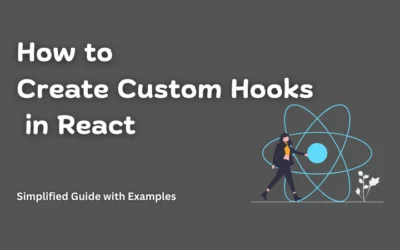If you’re working with React and Redux, chances are you’ve encountered your fair share of errors. One common error that can be frustrating to deal with is the “Cannot read property getState of undefined” error. But fear not! In this guide, we’ll walk through what causes this error and how to fix it.
Contents
Understanding the Error “Cannot read property getState of undefined”
First things first, let’s understand what this error means. When you see the message “Cannot read property ‘getState’ of undefined” in your console, it usually indicates that there’s an issue with how Redux is being integrated into your React application.
Common Causes
There are several reasons why you might encounter this error:
- Missing Redux Store: The most common cause is forgetting to provide the Redux store to your application or attempting to access the store before it’s properly initialized.
- Incorrect Setup: It’s possible that there’s an error in how you’ve set up your Redux store or connected your components to Redux.
- Undefined Variables: Sometimes, you might be trying to access Redux-related properties on undefined variables, leading to this error.
How to Fix It
Now that we understand what causes the error, let’s dive into how to fix it:
Check Redux Store Initialization
Ensure that you’re properly initializing your Redux store and providing it to your React application. This typically happens in your index.js or App.js file. Make sure you’re using createStore from Redux and passing your reducers properly.
Initializing a Redux store involves several steps to set up the central data store for your Redux-powered application. Here’s a straightforward guide on how to initialize a Redux store:
Install Redux
First, make sure you have Redux installed in your project. You can install it via npm or yarn.
Create Reducers
Reducers are functions that specify how the application’s state changes in response to actions. Create one or more reducers to manage different parts of your application state.
// Example reducer
const initialState = {
// initial state properties
};
const rootReducer = (state = initialState, action) => {
switch (action.type) {
case 'ACTION_TYPE':
// update state based on action
return {
...state,
// updated state properties
};
default:
return state;
}
};
Combine Reducers
If your application has multiple reducers, combine them into a single root reducer using combineReducers from Redux.
import { combineReducers } from 'redux';
const rootReducer = combineReducers({
// pass in individual reducers here
// Example:
// user: userReducer,
// posts: postsReducer,
});
Create Store
Use the createStore function from Redux to create the Redux store. Pass in the root reducer as an argument.
import { createStore } from 'redux';
const store = createStore(rootReducer);
Provider Component
Wrap your root component with the Provider component from react-redux. This provides the Redux store to your React components.
import React from 'react';
import ReactDOM from 'react-dom';
import { Provider } from 'react-redux';
import App from './App';
ReactDOM.render(
<Provider store={store}>
<App />
</Provider>,
document.getElementById('root')
);
Accessing the Store
You can now access the Redux store in your React components using hooks like useSelector or by connecting your components using the connect function.
import { useSelector } from 'react-redux';
const MyComponent = () => {
const state = useSelector(state => state);
// Access state properties
// Example: const data = state.data;
return (
<div>
{/* Your component JSX */}
</div>
);
};
And that’s it! You’ve successfully initialized a Redux store in your React application. Now you can start dispatching actions and managing your application’s state with Redux.
Connect Components Correctly
If you’re using the connect function from react-redux to connect your components to Redux, double-check that you’re passing the correct mapStateToProps and mapDispatchToProps functions. Also, ensure that you’re wrapping your root component with the Provider component from react-redux and passing your Redux store to it.
When using the connect function from react-redux to connect your components to Redux, it’s essential to ensure that you’re passing the correct mapStateToProps and mapDispatchToProps functions. Additionally, you need to wrap your root component with the Provider component from react-redux and provide your Redux store to it. Let’s break down how to accomplish both tasks.
1. mapStateToProps Function
The mapStateToProps function is used to specify which part of the Redux store’s state should be mapped to props in your connected component. It takes the current Redux state as an argument and returns an object containing the props that should be passed to the component.
const mapStateToProps = state => {
return {
// specify props based on state
data: state.data,
// additional props...
};
};
2. mapDispatchToProps Function
The mapDispatchToProps function is used to specify which actions should be available as props in your connected component. It takes the dispatch function as an argument and returns an object containing action creators or functions that dispatch actions.
const mapDispatchToProps = dispatch => {
return {
// specify actions as props
fetchData: () => dispatch(fetchDataAction()),
// additional actions...
};
};
3. Connect Component to Redux
Once you’ve defined your mapStateToProps and mapDispatchToProps functions, you can use the connect function to connect your component to Redux. Pass the mapStateToProps and mapDispatchToProps functions as arguments to connect, and then pass your component as the function returned by connect.
import { connect } from 'react-redux';
import MyComponent from './MyComponent';
const ConnectedComponent = connect(mapStateToProps, mapDispatchToProps)(MyComponent);
4. Provider Component
To ensure that your Redux store is available to all connected components in your application, you need to wrap your root component with the Provider component from react-redux. The Provider component accepts the Redux store as a prop and makes it accessible to all connected components.
import React from 'react';
import ReactDOM from 'react-dom';
import { Provider } from 'react-redux';
import store from './store'; // import your Redux store
ReactDOM.render(
<Provider store={store}>
<App />
</Provider>,
document.getElementById('root')
);
By following these steps, you ensure that your components are properly connected to Redux and have access to the Redux store for managing state and dispatching actions. Remember to double-check your mapStateToProps and mapDispatchToProps functions to ensure they’re correctly mapping state and actions to props in your components.
Debugging
Use console.log statements or debugging tools to check the values of variables related to Redux, such as the store or connected components. This can help you identify where the issue lies.
Review Your Code
Take a step back and review your code carefully. Look for any typos, syntax errors, or logic mistakes that might be causing the problem.
Conclusion
The “Cannot read property getState of undefined” error in React Redux can be tricky to debug, but by understanding its causes and following the steps outlined above, you should be able to resolve it. Remember to double-check your Redux store initialization, component connections, and overall code structure. With a little patience and perseverance, you’ll have your Redux-powered React application up and running smoothly in no time!





Your article helped me a lot on how to Fix “Cannot read property getState of undefined” Error, thanks.